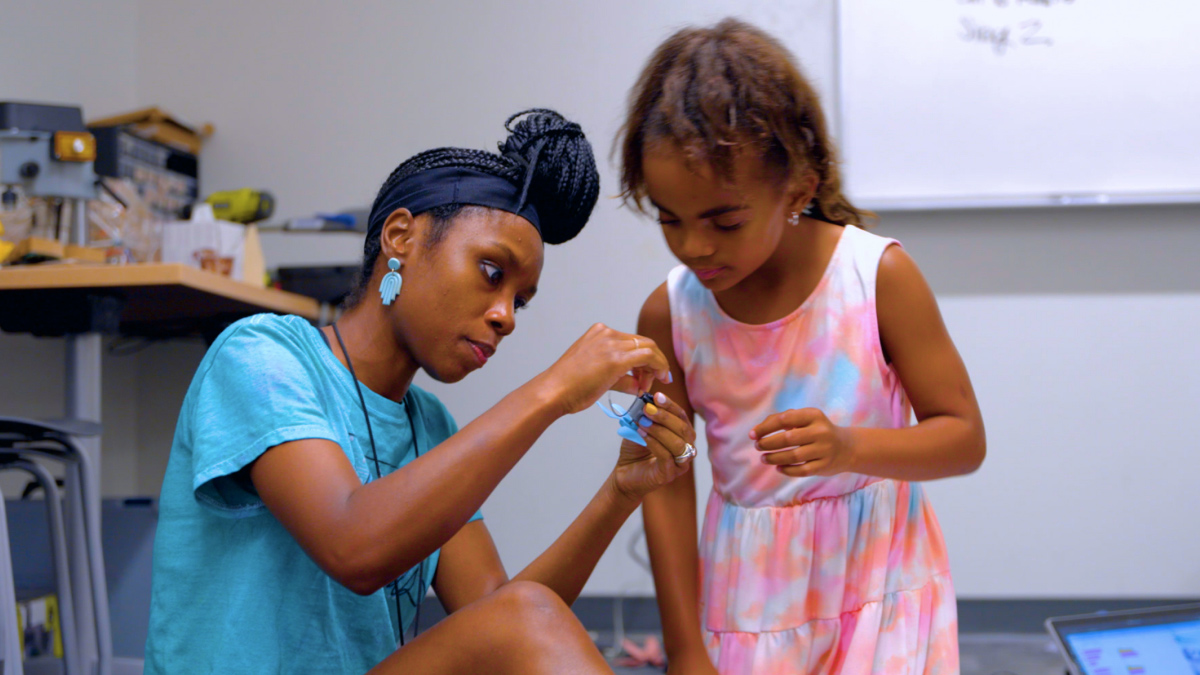What is a bottom-up approach and how might it change philanthropy?

Many organizations working on our biggest problems use a bottom-up approach. But what exactly does this mean?
A bottom-up approach respects the inherent worth of each person and unleashes creativity, initiative and talents, resulting in beneficial outcomes beyond what anyone could have planned or predicted. Bottom-up approaches prioritize general principles over strict rules, allowing for those at the top to incorporate the input and insights of those on the receiving end of their decisions.
This is a direct inverse of the top-down approach so prevalent across governmental and financial organizations in which decisions are entirely in the hands of high-up leaders, with their effects merely trickling down to those they affect on a day-to-day basis.
Because of the way it upholds the dignity of each individual, no matter their level, a bottom-up approach is one of the many principles guiding the work of the Stand Together community. The bottom-up approach can be applied to many different sectors: health care, education, poverty, criminal justice and urban planning, to name a few.
Below are some of the Stand Together community’s changemakers working from the bottom up, across a range of areas.
What does bottom-up mean for education?
In the context of K-12 education, bottom-up means putting education curriculum, scheduling and objectives into the hands of families and students, rather than school administrators.
This gives families the choice to pursue what education fits them and their child best. This may mean enrolling in a traditional education pathway, if they deem that the best route for their child’s unique goals, talents and interests. In other cases, it may mean attending a microschool, like Prenda; utilizing peer-to-peer tutoring, like at Schoolhouse.world; selecting a program that emphasizes STEM opportunities to young women, like Electric Girls; or allowing students to voice and direct their own projects, like with Let Grow.
An educational option that encompasses all of these possibilities is the One Stone School, an Idaho-based institution that prioritizes experiential learning and allows students to design their own curriculum.
“I’m at One Stone to find my purpose,” says one student. “I’m going to lead myself with peace and patience to explore my passions and develop a strong relationship with my full self.”
The meaning of a bottom-up approach in poverty
When trying to eradicate poverty, many cities and local governments implement broad policies that apply to all citizens under the poverty line. But this fails to recognize that their circumstances, struggles and goals vary depending on the individual and/or family.
Not everyone came into poverty from the same causes, and no one will grow out of poverty with the same solutions.
What does recognizing this look like in practice? Overarchingly, organizations lift families out of poverty by viewing them each as a unique story, with different backgrounds, obstacles, strengths and paths. Doing so recognizes people in poverty as individuals with dignity, not just statistics in a report.
Leaders at Freeworld know this firsthand. The organization provides job training, educational resources and access to reliable housing, transportation and other essential services to formerly incarcerated individuals. Doing so helps each person pursue their fullest potential on their own terms, seeking out what is most helpful for their unique circumstances.
“You get born into a world of poverty,” describes founder Jason Wang. “You never had a chance to begin with. And so at FreeWorld, our tag line is ‘Providing Legitimate First Chances.’ We’re going to invest in you. We don’t care about your history. We don’t care about your past. All we care about is your future.”
Bottom-up vs. top-down in criminal justice reform
The journey through the criminal justice system is not one-size-fits all. In criminal justice reform, a bottom-up approach recognizes that broad regulations based on sweeping generalizations — both about the incarcerated, as well as law enforcement — will likely apply only to a select few.
The backgrounds and circumstances that lead to incarceration vary from individual to individual, and how these individuals are handled should be similarly bespoke. This means policies, treatment plans and goals for the incarcerated should be individualized as per each person’s unique circumstances in a way that recognizes the full dignity of each person.
One organization that operates with this understanding at their core is Urban Specialists, which is led by an ex-gang leader, Antong Lucky. Lucky has partnered with the Dallas Police Department to visit with individuals about to be released from prison. Urban Specialists facilitates open, honest conversations between incarcerated individuals and police officers to allow each side to share their story and build a sense of collaboration and trust.
The Stand Together community partners with changemakers who are tackling the root causes of America’s biggest problems.
Learn more about Stand Together’s economic progress efforts, and explore ways you can partner with us.

